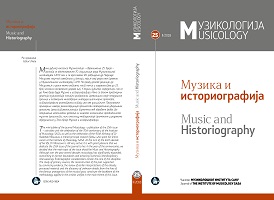Пијанистички репертоар Корнелија Станковића – између европске праксе и националне идеологије
Kornelije Stanković´s Piano Repertoire – From European Practice to National Ideology
Author(s): Marijana Kokanović MarkovićSubject(s): Music, Sociology of Art
Published by: Muzikološki institut SANU
Keywords: Kornelije Stanković; concerts; repertoire; music criticism;
Summary/Abstract: Of particular importance for the artistic commitment and maturation of Kornelije Stanković, was his training in Vienna, which at that time represented the center of the Slavic elite. The whole cultural and social atmosphere of Vienna left a strong imprint on the young artist: a rich cultural and political life of the city, contacts with Serbian and Slavic circles and their ideas, especially studies under distinguished professor at the Conservatory – a composer, pianist and theorist Simon Sechter. By studying the inscriptions in the Serbian press from the 19th century (Srbski list, Vidovdan, Južna pčela, Danica, Trgovačke novine, Šumadinka) and preserved posters of Stankovic’s concerts, we have selected the compositions that were part of the Kornelije Stanković piano repertoire. Besides his own compositions, his repertoire included some works of Franz Liszt and Sigismund Thalberg, and even, then popular and now forgotten salon composers-pianists: Jacob Blumenthal, Louis Lacombe, Rudolf Willmers, Eduard M. Pirkhert, and a certain man named Wald. It is possible that this selection of works was influenced by Sechter himself. Blumental and Lacombe were his students. However, the fact remains that the compositions of those authors, which Stanković performed, also represented the most famous works of those composers, as well as the standards of the salon repertoire at the time. The aim of this paper is to highlight the equal importance and representation of the foreign composers within Stankovic’s piano repertoire, as well as the actuality of performed compositions, which has allowed us to gain an insight into the German press of the considered period.
Journal: Muzikologija
- Issue Year: 2/2018
- Issue No: 25
- Page Range: 103-117
- Page Count: 15
- Language: Serbian

